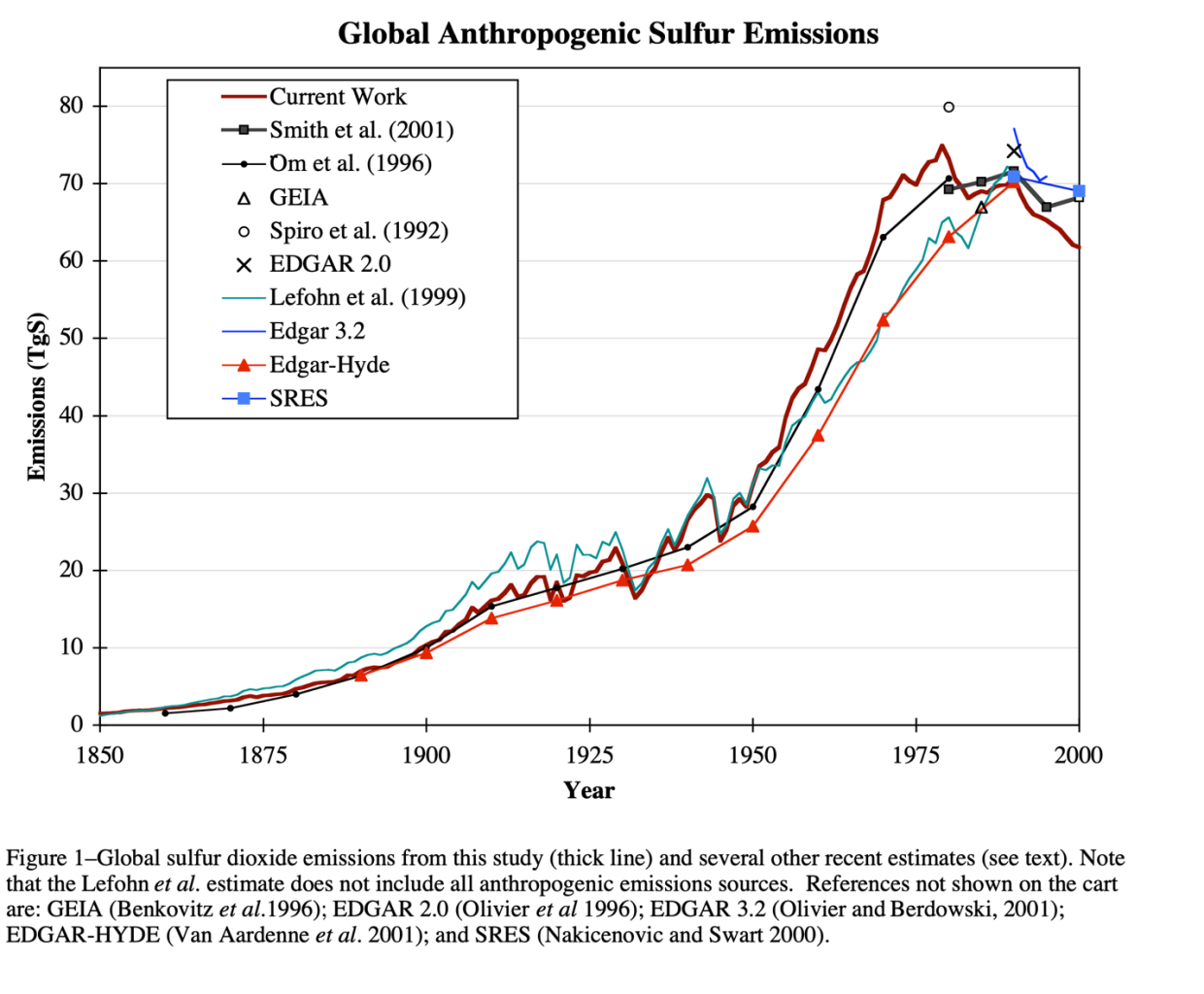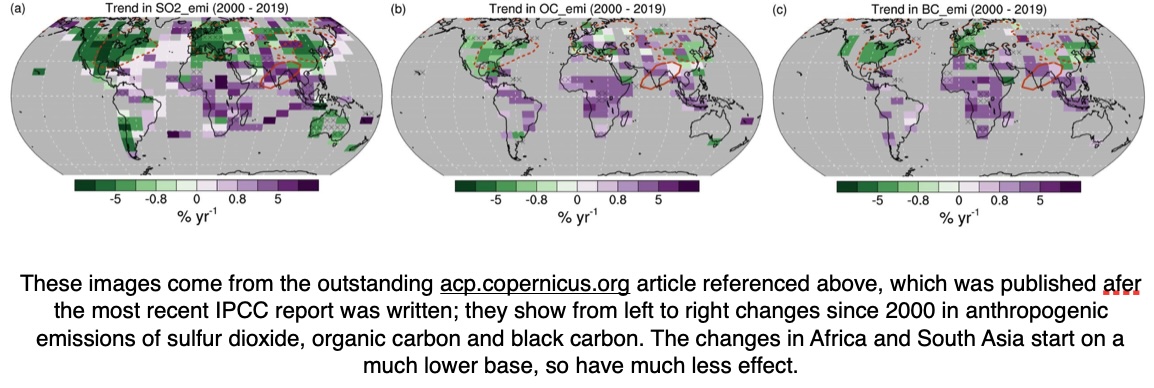In the page on the causes of climate change I asserted that the reduction in pollution, specifically aerosols1, has been responsible for much of recent climate warming..Here I provide more detail. Historically, human-produced aerosol sulfur dioxide (by far the most powerful aerosol) has decreased world temperatures (and to a minor extent so have carbon particles). Natural aerosols include sea salt and dust. These substantially exceed human-caused aerosols, but are not considered to be increasing significantly, and therefore have been mainly ignored in climate science. Sulfur dioxide cools by reflecting sunlight and by seeding clouds.
Aerosols have decreased global temperature since industrial times2, and surely, somewhat in cities before then, because of cooking and heating. During periods of the 19th century and from1940 and 1960 the great increase in aerosols was partly or fully responsible for a decrease in world temperatures.
Since 1980, aerosols, both sulfates and carbon particles, have been decreasing as shown in the chart below. Reductions of aerosols started with the Clean Air Act in the USA and comparable acts in Europe, in 1975. It has continued with improvements in the efficiency of combustion in transportation, furnaces and boilers, and power generation, the use of low-sulfur coal, the use of filters and so on. The chart illustrates these trends.3


The image shown below from a study for the post 2000 period, shows that aerosols have continued to decline.
In 2020 aerosols were further reduced (by about 10% of their 1980 level) because of a ban on high sulfur heating oil in most global shipping. This has dramatically reduced low level clouds over shipping corridors.4Replacement of coal and fuel oil by wind, solar or nuclear will decrease aerosols further.
The reduction in aerosols has had a good effect in providing “clean air”, but unfortunately a bad effect in increasing the solar irradiance reaching the earth — and that has a strong climate warming effect.
- An aerosol is defined as a suspension of fine solid particles or liquid droplets in air or another gas. ↩︎
- https://acp.copernicus.org/articles/22/12221/2022/acp-22-12221-2022.pdf and articles in its footnotes ↩︎
- https://www.pnnl.gov/main/publications/external/technical_reports/PNNL-14537.pdf ↩︎
- https://www.nature.com/articles/s43247-024-01442-3 ↩︎